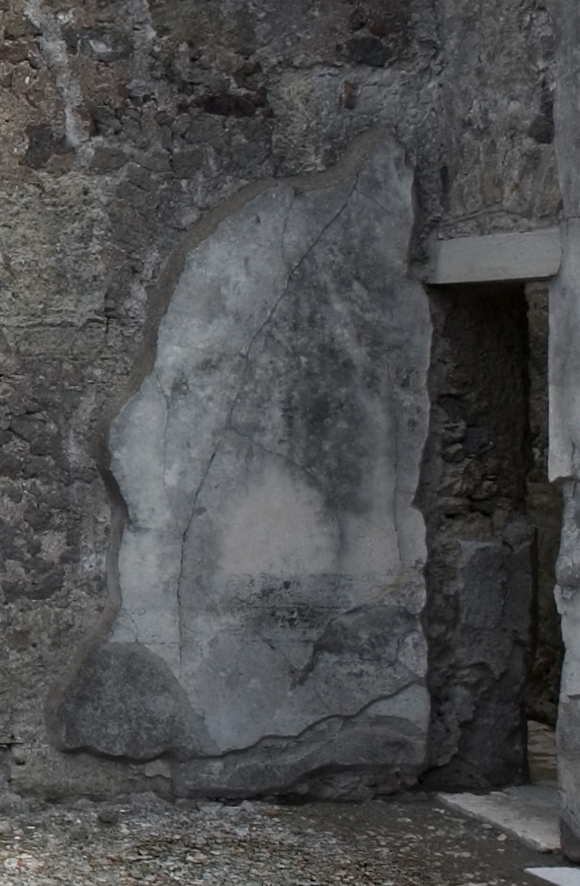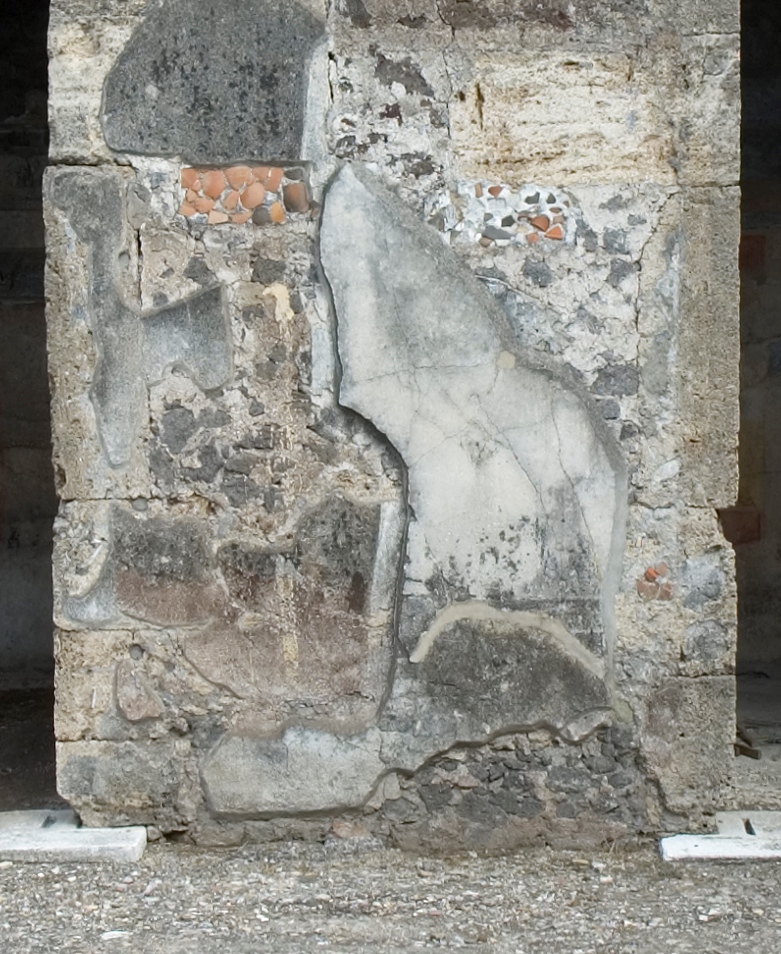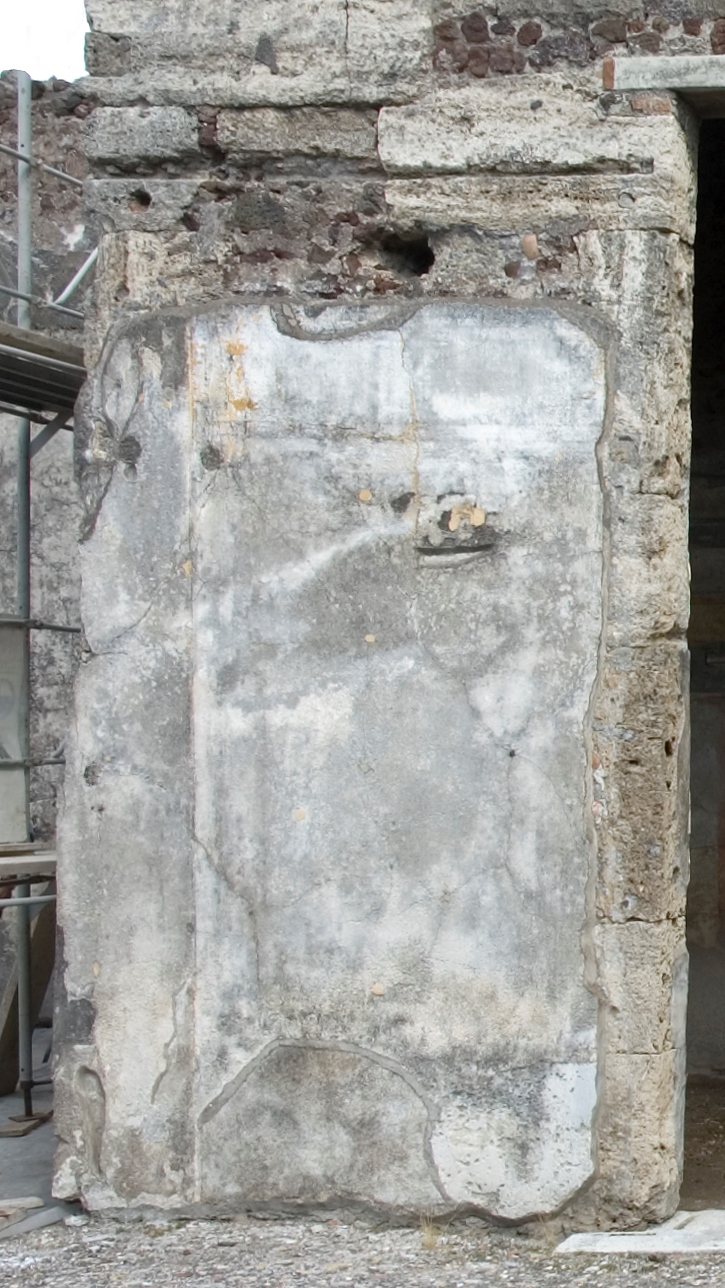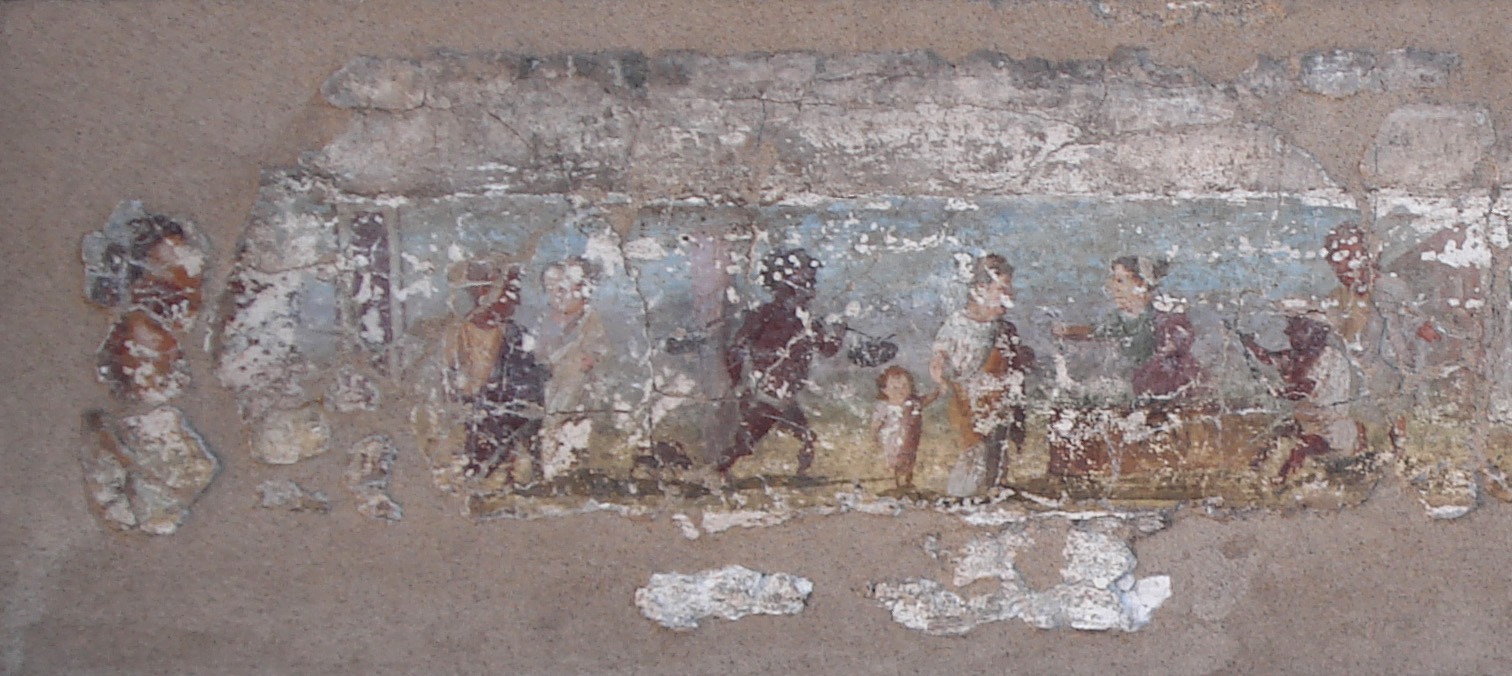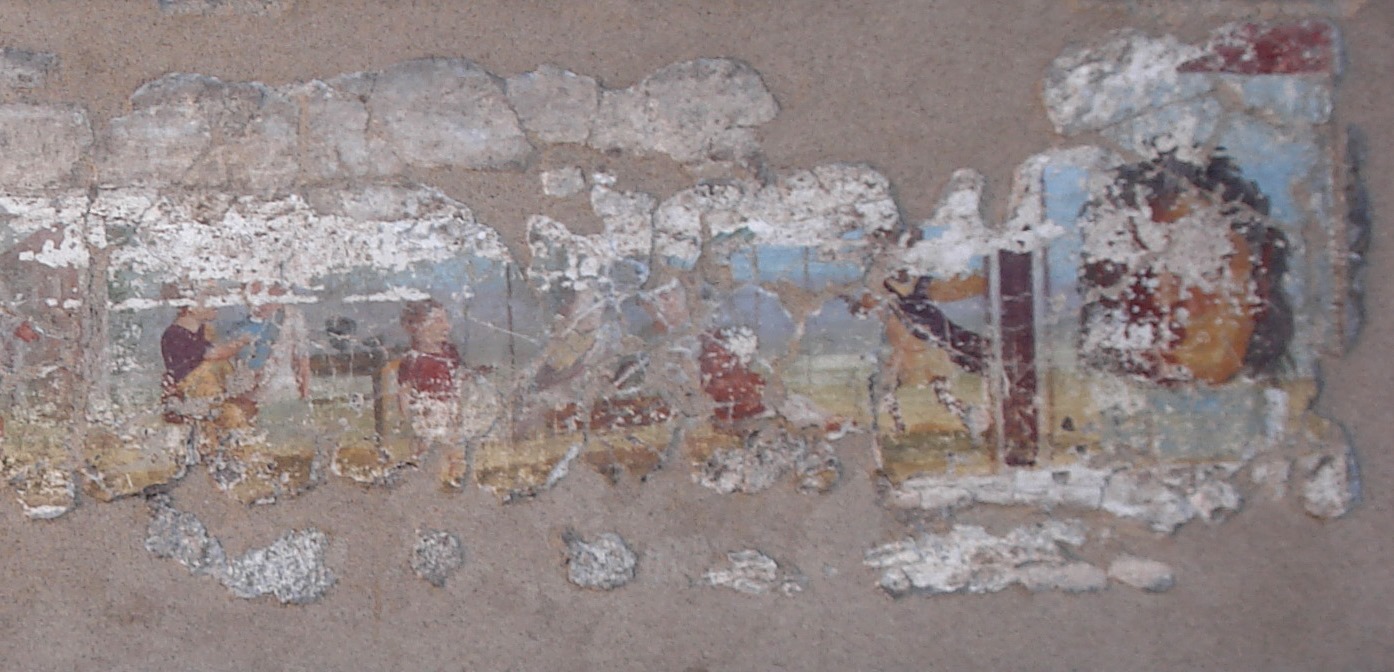Wall decoration (extant)
Description
Thomas Staub
Hardly any traces of the decorations, which were observed at the moment of the excavation (Schultz 1838) and by Mau (Mau 1882) in the 1870s, are preserved. On an undated photography, kept at the Fox collection in the Society of antiquaries (see www.pompeiiinpictures.com), the sections between cubiculum7 and ala9 are still quite well preserved. A frieze depicting dwarfes in different everyday life activities, which was situated in the upper part of the section between cubiculum8 and ala9, was cut out of the wall in October 1949 according to the giornali degli scavi and is nowadays stored at the conservator´s atelier in the House of Fabius Rufus (VII 16, 22).
The best overall impresion is gained by the short description by Mau:
"Atrium: am Sockel ist auf den Pfeilern zwischen den Thüren je ein lectus gemalt; die Hauptfläche besteht aus ungewöhnlich hohen stehenden Rechtecken mit rothem und grünem Rande. Ueber und zwischen ihnen ein violetter Streif, etwas breiter als die Ränder mit feinem, wenig erhaltenem Ornament. Dann folgt über einem rothen epistylartigen Zwischenglied ein gelber Fries mit einer Ghirlande, und weiter über einem rothen Streifen ein Fries mit den Pygmäendarstellungen Helbig 1546. Das Zahnschnittgesims in Stuck über diesem Fries ist offenbar ihm gleichzeitig; von den entsprechenden Gesimsen ersten Stils unterscheidet es sich auf das bestimmteste durch die breite und flache Behandlung des Zahnschnitts und dem Eierstab oberhalb desselben." (Mau 1882, p. 252)
On the east wall some traces, either as lines in the plaster or as faint remains of paint, allow a few observations. On the part between room 6 and cubiculum7, the horizontal structure of the dado is more or less traceable: the soccle zone consists of a 0.30 m high socle, followed by a 0.30 m high stripe, then two stripes, 0.05 m and 0.07 m high, and then a 0.12 m high band with fragments of red colour. In the middle zone, which begins above this, 0.60 m from the door to room 6, remains of 0.05 - 0.06 m wide red vertical line can be seen. On the section between cubicula7 and 8, only the uppermost band of the dado is discernable. Here parts of the wall are covered with an under plaster containing ceramic sherds, on top of a layer of plaster containing black split. The same sort of plaster also covers parts of the section between the cubicula7 and 8 and of the south wall, near the door towards V 1,6.
On the section between cubiculum8 and ala9, both the soccle and middle zones are lost, only remains of a 0.05 m wide vertical stripe at 0.32 m to the north of the door to cubiculum8 in the middle zone can be observed. Above 2.80 m height, two horizontal bands are visible, the lower one 0.05 m high, probably light red, the upper one also 0.05 m high in, a darker red. Above this, a 0.30 m high yellow field followed by a 0.05 m high stripe on top. After a further 0.05 m height, the plaster is missing. In 3.80 m height, a vertical groove is cut into the wall, probably after the small protecting roof, which was placed above the later removed frieze with dwarfs.
The dwarf frieze depicts different scenes of everyday life with dwarfes or pygmies as actors, thus probably to be seen as a caricature of human everyday life, framed by two tragical theatre masks. From the left to the right the following actions may be seen: two men, wearing togas, in a conversation, then a man with a dark complexion, wearing only a loincloth, who carrys some goods on a pole over his left shoulder and keeps an animal, as it seems, maybe a pig or a goat, on a lead. This man might be a farmer or an agricultural worker, which would explain the colour of his skin, coming to town to sell some of his products. The next scene shows a woman with a child, approaching a sales counter. Behind the counter a woman and, further to the right, a seated dark coloured man are depicted, both holding up and showing some product, maybe food, to the potential customer. According to the description by Schulz, she is presenting a bird for sale. (Schulz 1838, p. 163.) Behind the darker man another man, wearing a toga is standing, and judging by his gestures, arguing with the seated sales man.The sales man might also, judging by the dark skin and the travellers hat he is wearing, have come to town from the countryside.
Some sort of architecture in the background, unclear what, separates the following right half of the frieze from the just described left one. The right part shows scenes, which are more related to the convivium: it starts with two persons in conversation, standing, or as it seems in the drawing by Aurelio, sitting in front of a table, on which different vessels and cups are exposed. To the right finally a group of two or three people are reclining on a banquet couch, being served by a small man from the left. From the right a dark skinned man is approaching the group, once again with a pole over his shoulder, onto which, according to Schulz, a piece of meat was attached. ( Schulz 1838, p. 163.)
On the west wall, between cubicula15 and 16, in 2.50 m height, remains of a plaster layer are visible, which was pecked for the application of new plaster. The same can be observed on the north wall, between tablinum13 and andron10, in ca. 3.00 m height.

